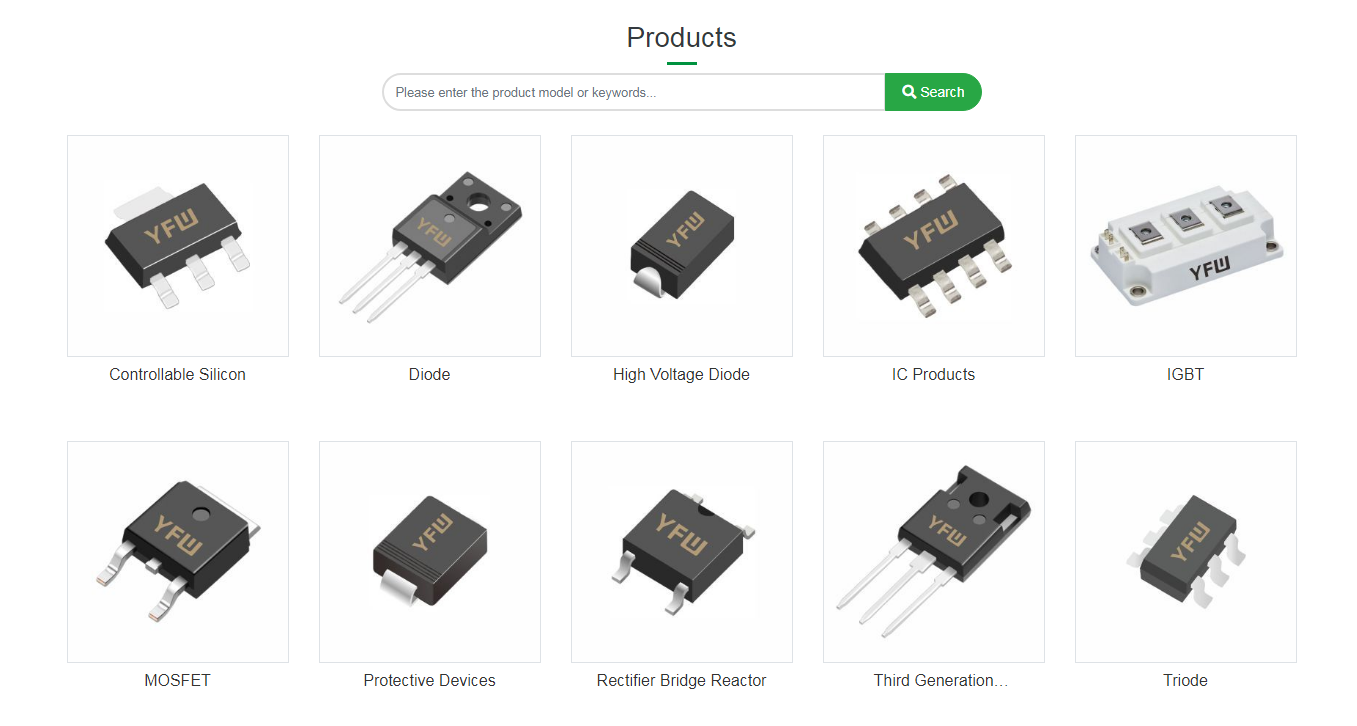Date:2025-03-18 Categories:Industry News Hits:910 From:Guangdong Youfeng Microelectronics Co., Ltd(YFW)
The recovery diode and the Schottky diode are two common types of diodes in the field of electronic components, both of which possess the characteristic of rapid conductivity. However, have significant differences in structure, working principle, and application areas. Understanding these differences helps in determining whether they can be used interchangeably. Fast Recovery Diode A fast recoveryode is a specially designed PN junction diode that has been improved to address the issue of longer recovery time in ordinary diodes, allowing it to be used in high-frequency circuits reduce energy loss during switching. Fast recovery diodes are commonly used in high-frequency circuits such as inverters, switch-mode power supplies, and rectifier circuits. main feature is its short reverse recovery time (trr), which allows for quick switching, but compared to Schottky diodes, fast recovery diodes have a larger forward drop and a smaller reverse leakage current. Schottky Diode The Schottky diode employs a Schottky barrier formed by a metal-semiconductor junction to create a conductive channel. Compared to traditional PN junction diodes, it has a lower forward voltage drop and faster switching speed. Schottky diodes are very suitable as powerifier devices, especially in low-voltage applications where they excel. Its reverse recovery time is extremely short, almost negligible, but the disadvantage is that the reverse leakage current is relatively large high temperatures, and the reverse voltage withstand is generally not high. Can they be interchanged? Although there is some overlap in performance (such as fast switching characteristics) between recovery diodes and Schottky diodes, their core advantages and applicable scenarios differ. Therefore, whether they can be used interchangeably depends on the specific application scenario and requirements:1. Forward voltage drop and efficiency requirements: If the application has strict requirements on forward voltage drop and efficiency, Schottky diodes are usually a better choice. 2.everse voltage withstand and leakage current: In applications requiring higher reverse voltage withstand and smaller leakage current, fast recovery diodes may be more appropriate. 3. Working frequency: For-frequency applications, both can be considered, but the specific choice depends on a comprehensive consideration of forward voltage drop, reverse recovery time, and other parameters. 4. Temperature characteristics If the application environment temperature is high, the fast recovery diode's small leakage current characteristic may be more advantageous. Which has a shorter reverse recovery time, a fast recoveryode or a Schottky diode? Reverse recovery time (Reverse Recovery Time, abbreviated as trr) refers to the time required for a diode to from the forward conduction state to the reverse blocking state. When the forward current is cut off, charge moves from the conducting region to the blocking region, and the reverse recovery time refers the time required for this charge movement, that is, the time from the diode's conducting state to the blocking state. During the reverse recovery process, the reverse current of diode will quickly decrease until it reaches the zero current state. Schottky diodes have a shorter recovery time, usually in the nanosecond range, making them suitable higher frequency and faster switching applications. Fast recovery diodes, although also with relatively short recovery times, are not as short as Schottky diodes. Therefore, the reverse recovery of a Schottky diode is shorter. Conclusion Fast recovery diodes and Schottky di

Previous: Simple identification methods for crystal diodes, the product functions of crystal diodes
Next:NZT560A 1A 80V SOT-223 Marked NZT560A Small Signal Transistor Y Micro Brand